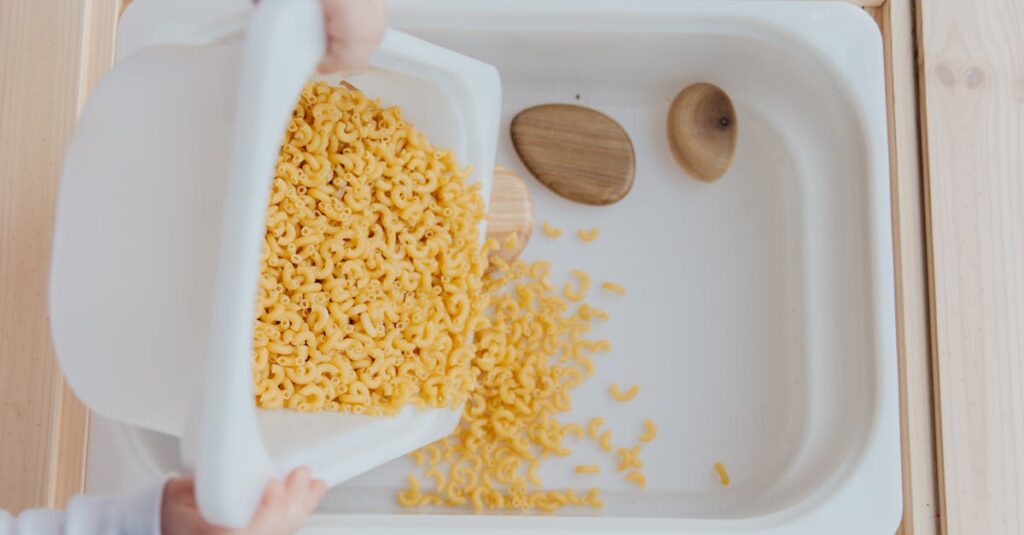Why Sensory Bins Are Great for Babies
Sensory bins are a fantastic tool for engaging your baby’s senses. They’re containers filled with varied materials for touching, smelling, hearing, and even tasting. Contrary to many toys, sensory bins cater to multiple senses simultaneously, making them perfect for early development.
Babies are naturally curious, and sensory bins give them a controlled way to explore. The tactile stimulation helps with fine motor skills and cognitive growth. Plus, they’re just plain fun! Imagine watching your little one discover rice, beans, or soft fabrics. Priceless!
Sensory bins offer:
- Engagement of multiple senses
- Enhancement of fine motor skills
- Promotion of cognitive growth
- A controlled way for babies to explore
How to Create a Sensory Bin
Creating a sensory bin is easy and customizable. Start with a simple plastic container or any shallow bin you have at home. Then, think about a theme—maybe a beach day or a mini farm?
Fill the bin with suitable materials. If it’s a beach theme, you might use:
- sand
- small shells
- plastic shovels
If it’s a farm theme, consider:
- dried corn
- small animal figures
- toy tractors
The possibilities are endless and often don’t require a trip to the store. Look around your house; you’re sure to find hidden gems.
Materials for Your Sensory Bin
When choosing materials, safety is key. Avoid small parts that can be choking hazards and sharp objects. For babies, items like cooked pasta, shredded paper, and soft fabrics are great. These are safe to mouth and handle. You could also use items like cotton balls or pom-poms for soft textures. Water beads or kinetic sand can be excellent for older babies under strict supervision. Remember, what’s fun for one child might not be safe for another, so tailor your materials accordingly.
Supervision and Safety Tips
Supervising your baby during sensory play is non-negotiable. Although sensory bins are meant to be safe, they do involve small parts, new textures, and sometimes food items. Always be present to oversee the activity and prevent choking or other hazards.
Start with shorter play sessions to watch your baby’s reactions. Over time, you’ll get an idea of how long they can engage safely. Consider setting up the bin in an easy-to-clean area. This way, you prevent potential mess-related stress.
Dealing with Mess and Clean-Up
Mess is inevitable with sensory bins, but tackling it can be straightforward. Here are a few tips:
- Lay a mat or sheet under the bin to catch spills.
- Have a small broom and dustpan handy for quick clean-ups.
- Choose easily washable materials to minimize post-play stress.
If you’re outdoors, even better! Let the mess be part of the fun. You might also turn clean-up into another playful activity. Encouraging your baby to help can teach responsibility and make the task seem less tedious.
Check out the image for inspiration:
Encouraging Creative Play with Sensory Bins
Sensory bins are just starting points for creative play. Encourage your baby to think outside the box—literally! Suggest new ways to use the materials in the bin. Maybe the pom-poms become ‘bubbles’ in a pretend bathtub, or the rice transforms into a ‘snowy’ landscape.
Extend sensory play beyond the bin. Take cues from your child’s interests and build on them. This kind of imaginative play can boost problem-solving skills and emotional development, making it a win-win for both parent and child.

